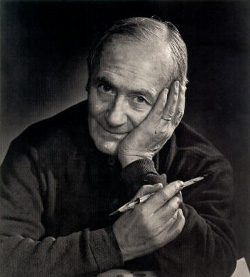Surrealist Themes
Surrealism sought to make real the unreal, unconscious mind and use it's dream-like symbology in a tangible artistic form. It had contemporaries such as Sigmund Freud and Carl Jung and shared much with Psychodynamics with it's fascination with the unconscious mind. Much of what is innate and raw and carnal with humans, resides in the unconscious and primal regions of the temporal lobe, where the Amygdala and Hipposcampus are. Emotions, aggression, fight or flight and memory reside here. As such, Surrealism shares itself with the anti-rationalism of Dada.
Surrealists Book Results
As an Amazon Associate, I earn from qualifying purchases.
Surrealists Book Results
As an Amazon Associate, I earn from qualifying purchases.
Some of the overriding themes that also sit here would be dreams, the unconscious mind, double imagery, metaphor, symbols, sex, erotiscism, desire and also texture, physicality and juxtaposition and opposing ideas. See also the page on Surrealism in Advertising for an analysis of the similarities with the symbology and imagery in Surrealism and advertising. Whereas you have the practicalities of real life, the world of advertising creates a different world, a problem-solution world. Much like the unconscious is a problem solving engine for the conscious mind.
Examples:
Le surrealisme au service de la revolution 1931 by Salvador Dali - when viewed sideways
Metamorphosis of Narcissus 1937 by Salvador Dali
Swans reflecting elephants by Salvador Dali
Castle in the Pyranees 1959 by Rene Magritte
Time transfixed 1939 by Rene Magritte
Examples:
Galarina by Salvador Dali
Young virgin autosodomised by her own chastity 1954 by Salvador Dali
Pleasure 1926 by Rene Magritte
Electricity by Man Ray
Examples:
LHOOQ Mona Lisa with moustache by Marcel Duchamp
Bicycle wheel 1913 by Marcel Duchamp
Fur covered breakfast 1936 by Meret Oppenheim
Freud, Dreams and Symbology
Sigmund freud used to use dreams analysis as part of therapy. This was a rich container for symbols that he suggested were the vehicles of meaning from the unconscious problem solving mind, to the conscious. Untangling these symbols and meanings were what he saw as the key to untangling problems of the mind. In a similar way, symbols are used very much throughout Surrealist works, particularly putting every day objects where they should not be or where they physically can't be. Double imagery is used also, where one image can be translated visually or physically into another with a different viewing angle or by a trick of the mind.Examples:
Le surrealisme au service de la revolution 1931 by Salvador Dali - when viewed sideways
Metamorphosis of Narcissus 1937 by Salvador Dali
Swans reflecting elephants by Salvador Dali
Castle in the Pyranees 1959 by Rene Magritte
Time transfixed 1939 by Rene Magritte
Sex and Eroticism
The aforementioned primitive and carnal part of the mind can surface in or from the unconscious. Desire and physical needs are the least rational of the human experience as they can override rational thought with pure emotion. Such unconscious motivations, then, often surface in Surrealist works.Examples:
Galarina by Salvador Dali
Young virgin autosodomised by her own chastity 1954 by Salvador Dali
Pleasure 1926 by Rene Magritte
Electricity by Man Ray
Texture and Juxtaposition
Another physicality of Surrealist works is the use of physical objects instead of painted of 2D artworks. This can include the juxtaposition of texture in places where you wouldn't expect it. Often in places where you wouldn't want it either. Or where it might cause irritation or embarrassment.Examples:
LHOOQ Mona Lisa with moustache by Marcel Duchamp
Bicycle wheel 1913 by Marcel Duchamp
Fur covered breakfast 1936 by Meret Oppenheim



